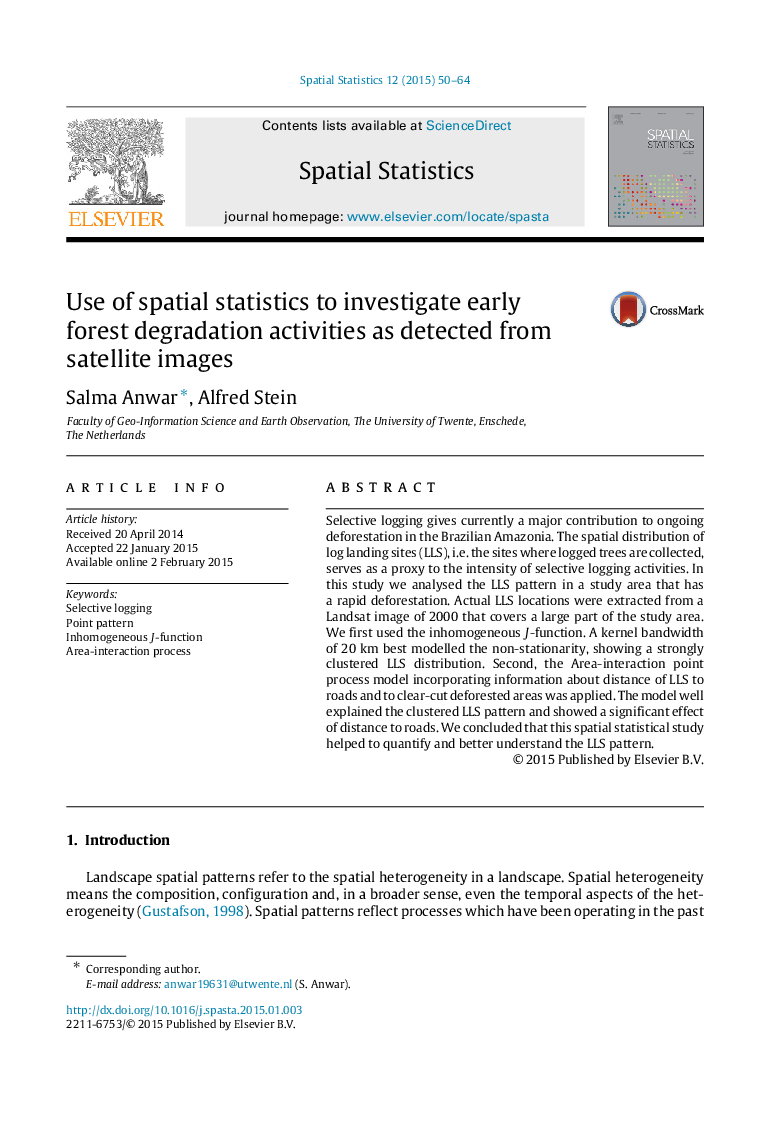| Article ID | Journal | Published Year | Pages | File Type |
|---|---|---|---|---|
| 1064518 | Spatial Statistics | 2015 | 15 Pages |
Selective logging gives currently a major contribution to ongoing deforestation in the Brazilian Amazonia. The spatial distribution of log landing sites (LLS), i.e. the sites where logged trees are collected, serves as a proxy to the intensity of selective logging activities. In this study we analysed the LLS pattern in a study area that has a rapid deforestation. Actual LLS locations were extracted from a Landsat image of 2000 that covers a large part of the study area. We first used the inhomogeneous JJ-function. A kernel bandwidth of 20 km best modelled the non-stationarity, showing a strongly clustered LLS distribution. Second, the Area-interaction point process model incorporating information about distance of LLS to roads and to clear-cut deforested areas was applied. The model well explained the clustered LLS pattern and showed a significant effect of distance to roads. We concluded that this spatial statistical study helped to quantify and better understand the LLS pattern.
